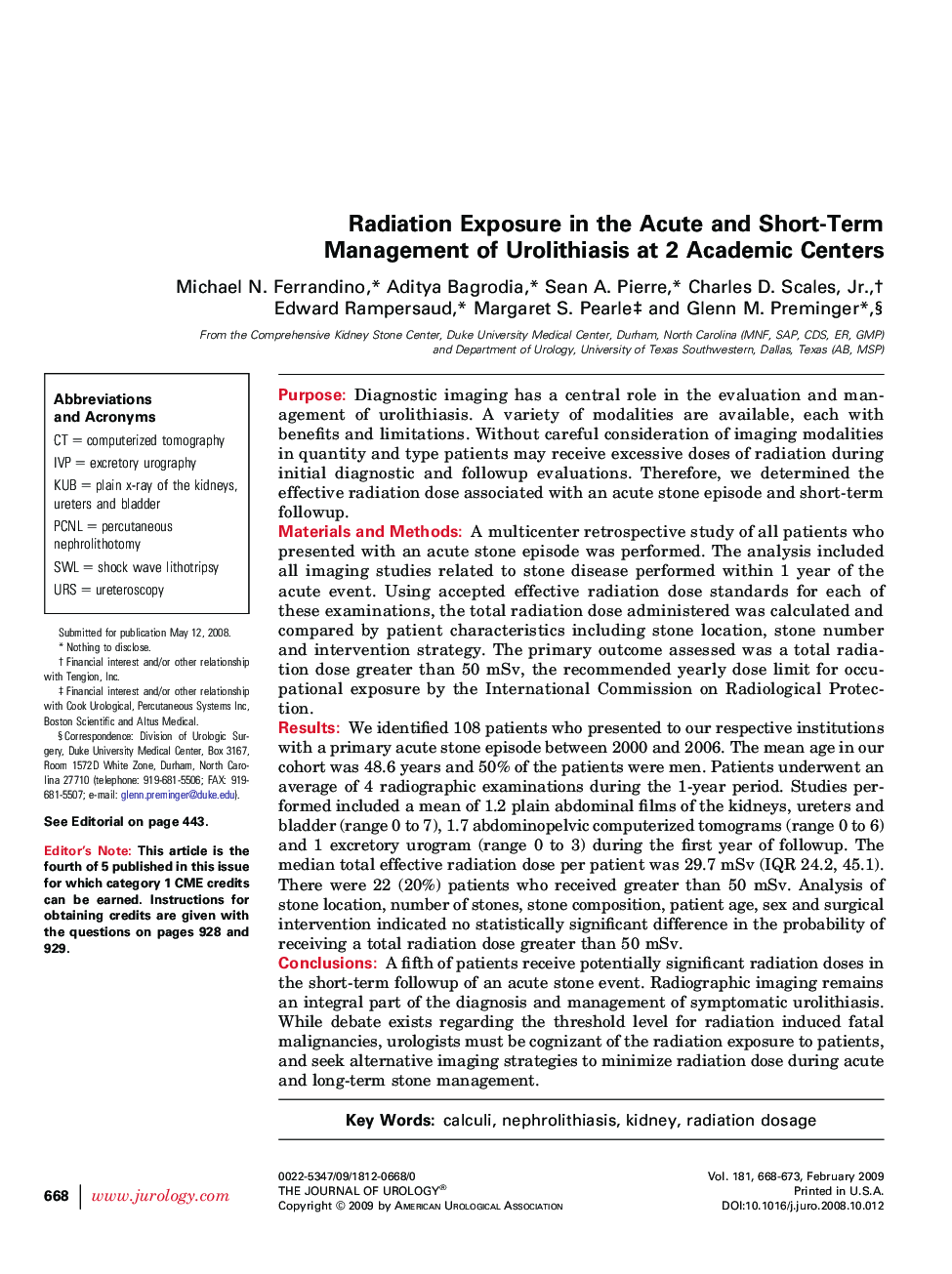| کد مقاله | کد نشریه | سال انتشار | مقاله انگلیسی | نسخه تمام متن |
|---|---|---|---|---|
| 3871361 | 1598983 | 2009 | 6 صفحه PDF | دانلود رایگان |

PurposeDiagnostic imaging has a central role in the evaluation and management of urolithiasis. A variety of modalities are available, each with benefits and limitations. Without careful consideration of imaging modalities in quantity and type patients may receive excessive doses of radiation during initial diagnostic and followup evaluations. Therefore, we determined the effective radiation dose associated with an acute stone episode and short-term followup.Materials and MethodsA multicenter retrospective study of all patients who presented with an acute stone episode was performed. The analysis included all imaging studies related to stone disease performed within 1 year of the acute event. Using accepted effective radiation dose standards for each of these examinations, the total radiation dose administered was calculated and compared by patient characteristics including stone location, stone number and intervention strategy. The primary outcome assessed was a total radiation dose greater than 50 mSv, the recommended yearly dose limit for occupational exposure by the International Commission on Radiological Protection.ResultsWe identified 108 patients who presented to our respective institutions with a primary acute stone episode between 2000 and 2006. The mean age in our cohort was 48.6 years and 50% of the patients were men. Patients underwent an average of 4 radiographic examinations during the 1-year period. Studies performed included a mean of 1.2 plain abdominal films of the kidneys, ureters and bladder (range 0 to 7), 1.7 abdominopelvic computerized tomograms (range 0 to 6) and 1 excretory urogram (range 0 to 3) during the first year of followup. The median total effective radiation dose per patient was 29.7 mSv (IQR 24.2, 45.1). There were 22 (20%) patients who received greater than 50 mSv. Analysis of stone location, number of stones, stone composition, patient age, sex and surgical intervention indicated no statistically significant difference in the probability of receiving a total radiation dose greater than 50 mSv.ConclusionsA fifth of patients receive potentially significant radiation doses in the short-term followup of an acute stone event. Radiographic imaging remains an integral part of the diagnosis and management of symptomatic urolithiasis. While debate exists regarding the threshold level for radiation induced fatal malignancies, urologists must be cognizant of the radiation exposure to patients, and seek alternative imaging strategies to minimize radiation dose during acute and long-term stone management.
Journal: The Journal of Urology - Volume 181, Issue 2, February 2009, Pages 668–673